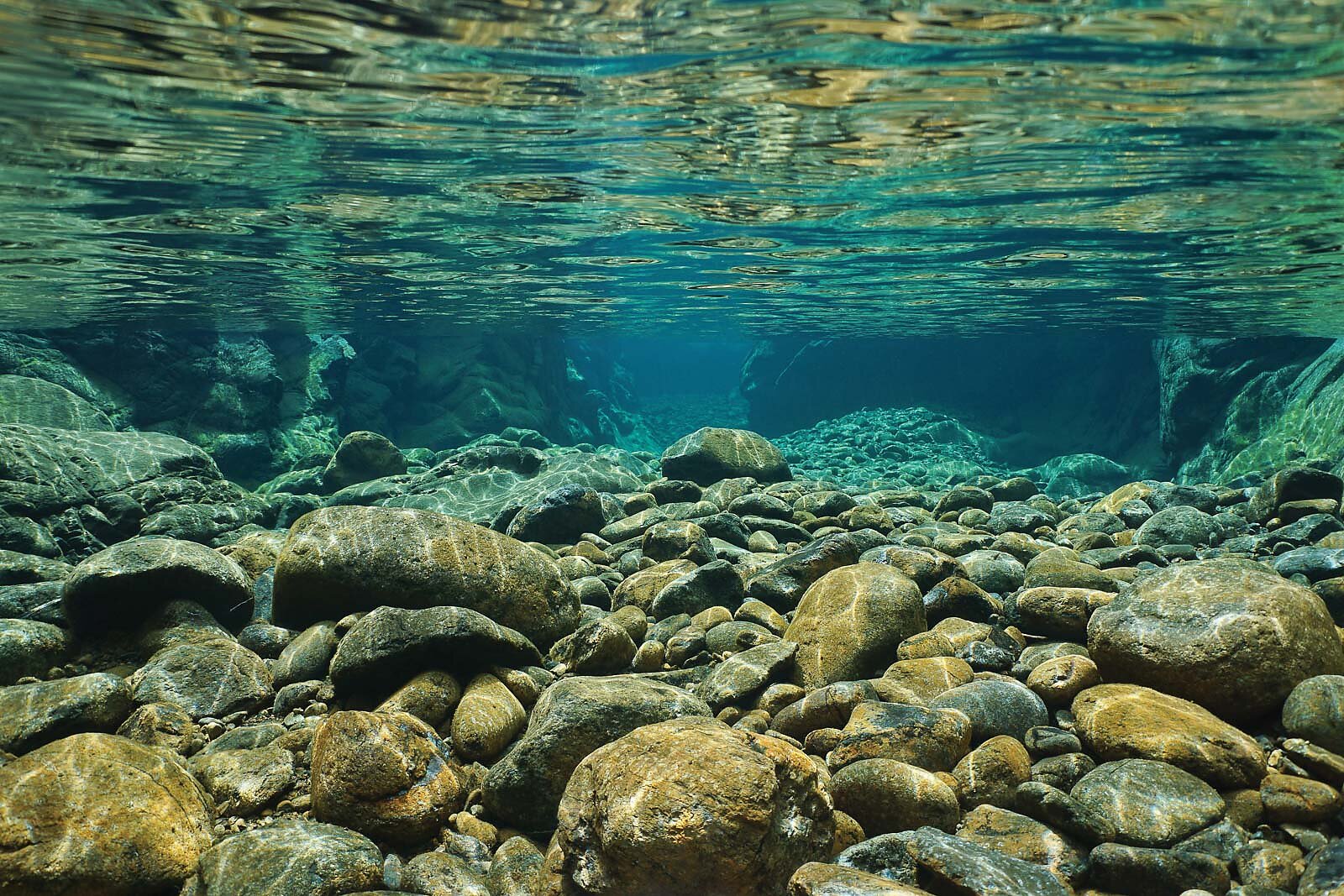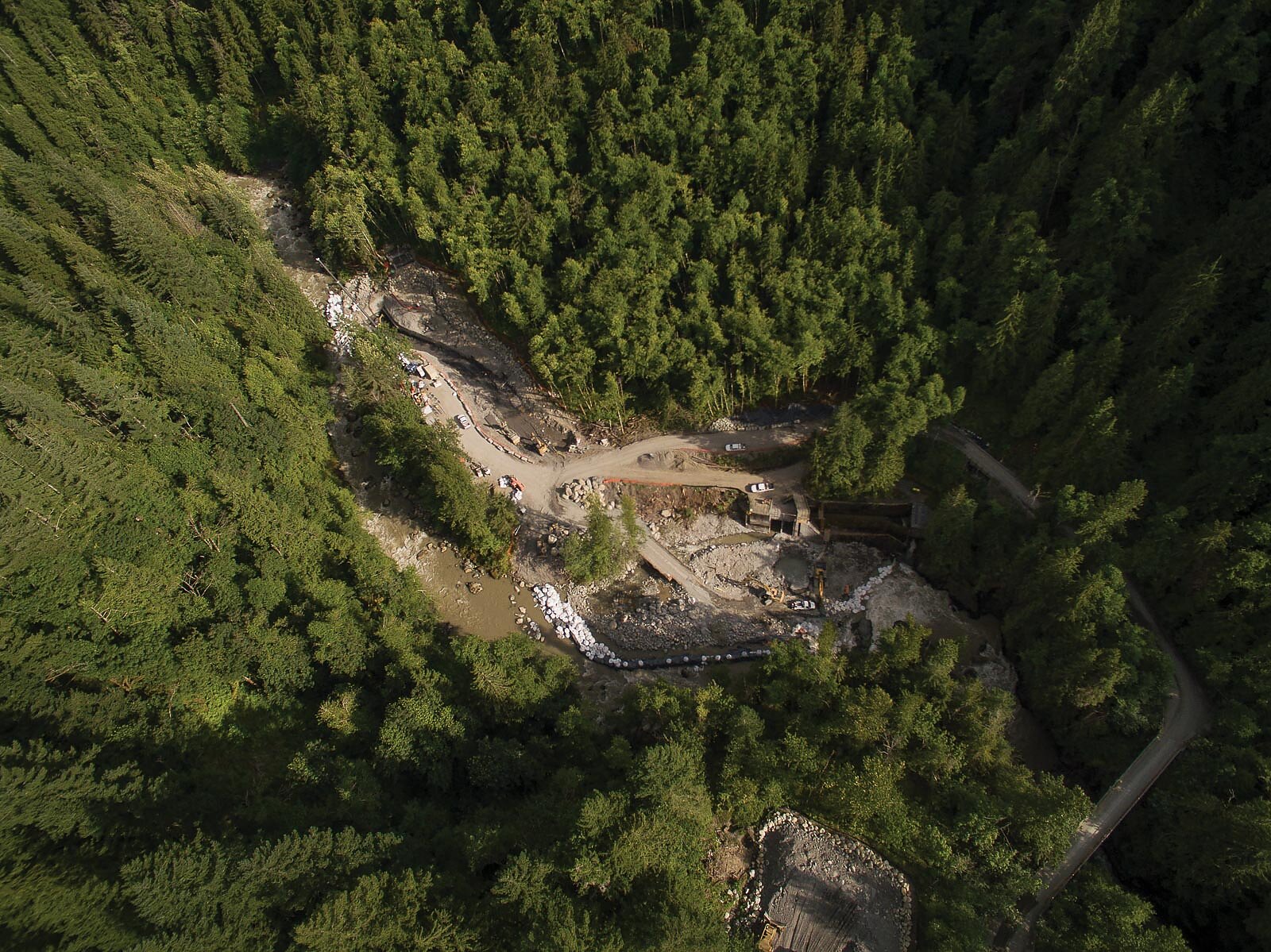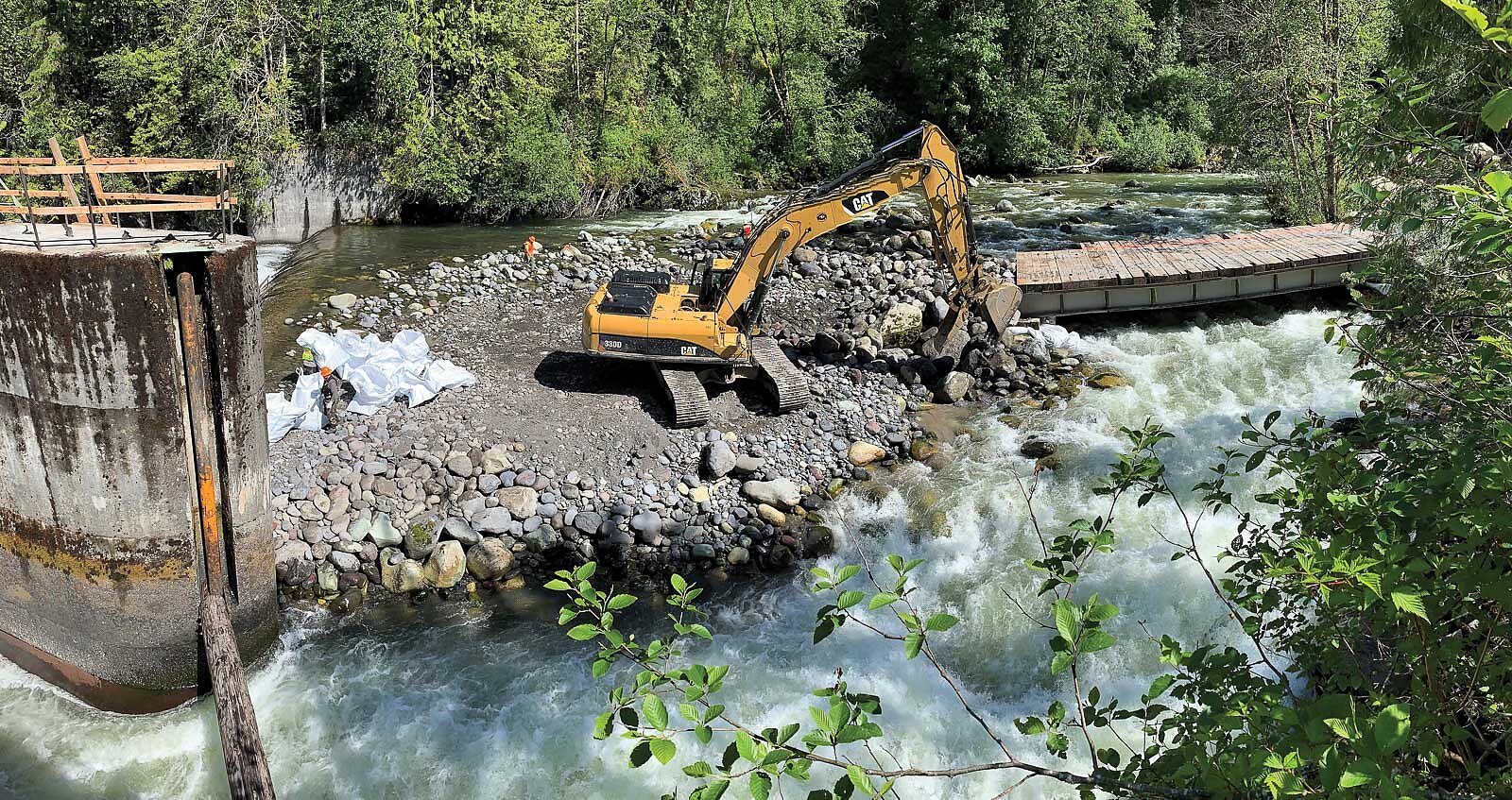
A River Runs Free Restoring Access to Long-Lost Habitat on The Nooksack River
Words by Elizabeth Kimberly
“Eventually, all things merge into one, and a river runs through it.”—Norman Maclean, A River Runs Through It, 1976
Between the banks and along the meanders of the Nooksack River in northwest Washington are endless confluences where snowmelt flows atop lava deposits from historic eruptions on Mount Baker. Braided channels weave together like age-old stories of the Nooksack Indian Tribe and Lummi Nation, carrying centuries of spiritual significance and indigenous knowledge. Sediment pulses work in concert with erosional forces to find equilibrium. Fallen old-growth trees create habitat refugia for fish.
Yet when a concrete dam was built on the Middle Fork of the Nooksack River in 1962, it disrupted eons of this natural evolution in a matter of mere moments. The structure diverts water from the Middle Fork to Bellingham’s main water source, Lake Whatcom, through an 11-mile-long pipeline and its implications flow across the watershed. Its construction widened the river channel, disrupted the river’s flow atop a natural bedrock cascade and blocked spawning salmon and trout from reaching 16 miles of critical habitat within the Nooksack River’s watershed.
Pacific salmon, steelhead and bull trout are all listed as threatened under the Endangered Species Act, and the obstruction to their migratory routes threatens their ability to reproduce. Fish have vital economic and cultural value for tribal communities, and declining salmon populations jeopardize this livelihood.

Pacific salmon, steelhead and bull trout are all listed as threatened under the Endangered Species Act, and the obstruction to their migratory routes threatens their ability to reproduce. Fish have vital economic and cultural value for tribal communities, and declining salmon populations jeopardize this livelihood.
Fewer salmon also deprive the ecosystem of nutrients and deplete local fauna—from bears to coyotes to the critically endangered southern resident orca—of a major food source.
Now, after being blocked for more than half a century, the Middle Fork is finally being liberated. The Middle Fork Nooksack River Fish Passage Project is a collaboration between the City of Bellingham, the Nooksack Tribe, the Lummi Nation, American Rivers, and other partners that aims to restore the natural flow of the river. Initially agreed to in 2002 and reinitiated with private funding in 2017, the project revolves around removal of the original dam and construction of a new water-intake system that enables fish passage while still allowing water diversion to supplement Bellingham’s municipal supply. In-water work began in June 2020 and is scheduled to be completed by October 2020.
However, like the salmon, the project has had its own share of diversions and impediments. According to April McEwen, American Rivers project manager, a major challenge was securing funding for the $20 million project while also completing technical design and permitting in just over a year.
The five-week-long federal government shutdown and continuing global pandemic threatened the team’s ability to secure federal permits and endangered the construction material supply chain. But, like a river responding to a hydrologic flux, the interdisciplinary project team was able to evolve, adjust and keep the project flowing forward.

In an effort to place the river’s priorities first, the channel restoration design was informed by a scientific geomorphic evaluation of the river channel instead of traditional engineering methods. The design utilizes the river’s steep gradient to divert water with a diversion intake driven by gravity. The placement of boulder jams throughout the restored dam site will simulate river conditions upstream and downstream of the dam and allow upstream fish passage.
The new diversion intake will withdraw water through a remotely controlled gate about 600 feet upstream of the current dam, and only when the river is above a base-flow threshold that ensures the protection of aquatic life. When water is diverted, it will flow through a “fish screen” to catch any fish before they ride the underground waterslide to Lake Whatcom. Instead of landing in a warm lake fringed with boats and beaches, the salmon and trout will return to their icy upstream thoroughfare, lined with strands of cedar and backlit by alpenglow.
“Projects like this one symbolize restoration of relationships between disconnected people, and between people and the natural life support systems that nurture and sustain us all,” McEwen says. “Listening to diverse perspectives and really honoring that input by producing collaborative solutions and multi-benefit outcomes is key to us all surviving in a world challenged by climate change.”
Once the project is complete, the Middle Fork of the Nooksack River will flow free again, and Pacific salmon, steelhead and bull trout will flock to its upper reaches as they haven’t done for 58 years. It will once again be a landscape where all things merge into one.